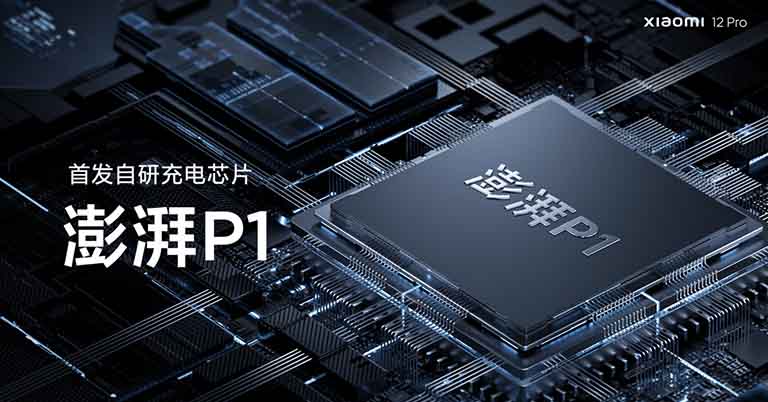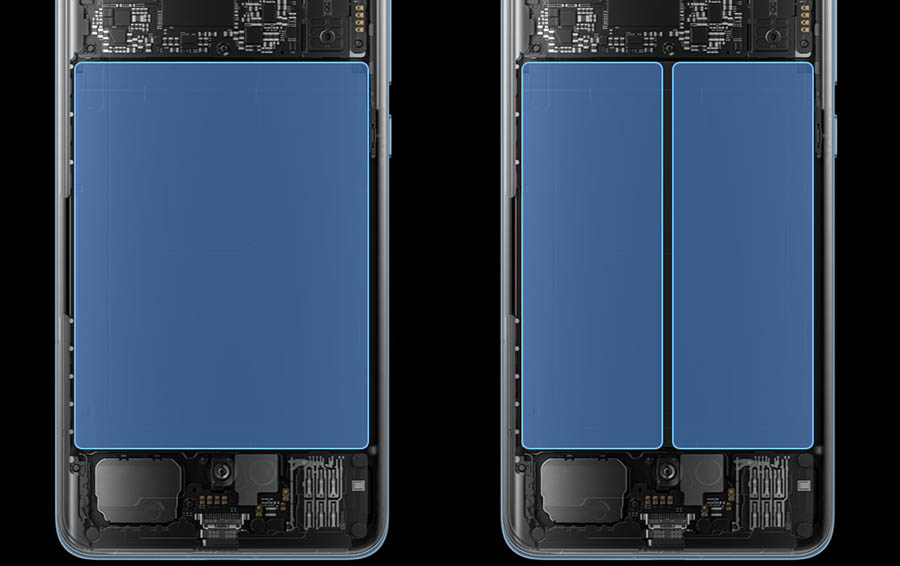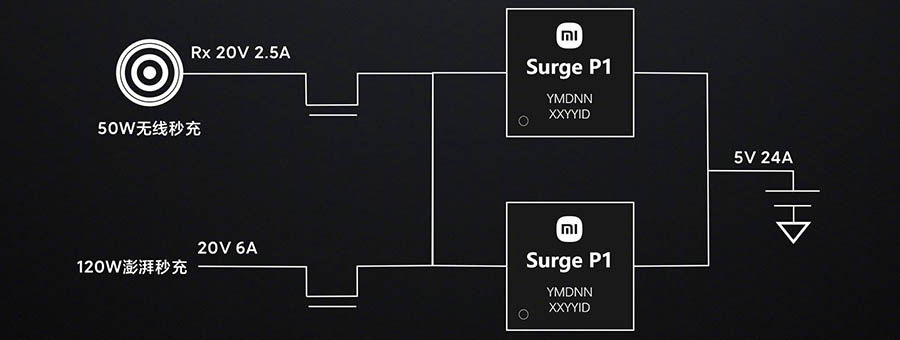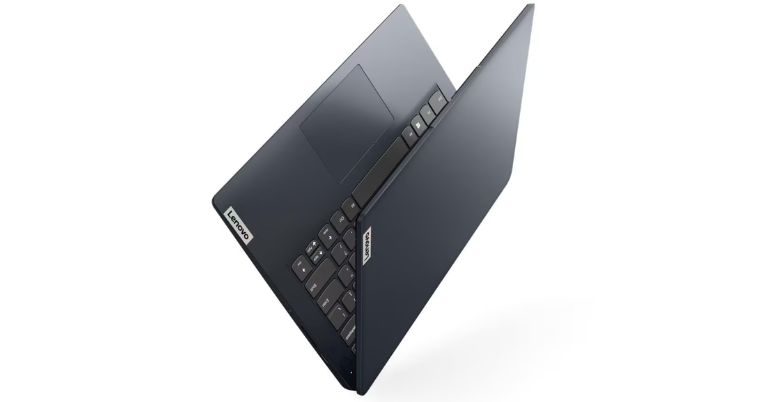
Days before unveiling the much-awaited Xiaomi 12 series, the company has announced the “Surge P1” chip via its official Weibo handle. It’s an in-house chip that will allow 120W single-cell rapid charging in smartphones—and Xiaomi 12 Pro will be the first phone to use this silicon. In this post, we will discuss the Xiaomi Surge P1 chip in more detail, including its underlying architecture, benefits, and application.
Xiaomi Surge P1 Fast-Charging Chip Overview
Surge P1 is the second self-developed chip by Xiaomi to launch this year. The first one was Surge C1 Image Signal Processor (ISP) that debuted on the Mix Fold. Here, the Surge P1 is another breakthrough in fast charging technology.
To this date, manufacturers have been using dual-cell batteries to achieve fast charging usually greater than 100W. However, with the Surge P1, such charging speeds can be achieved within a single-cell battery. This new chip will help save battery space and maintain the temperature in future Xiaomi phones.
Problem with traditional fast-charging technologies
The dual-cell architecture that most smartphones rely on has many drawbacks. First is the space. It needs multiple complex circuits to work, including a 2:1 step-down voltage converter. These circuits end up taking a large amount of space that otherwise could be used to fit a larger battery. In addition, the 2:1 step-down chip wastes 3% to 4% of power during charging.

- Also Read:
These two problems can easily be solved using a single-cell architecture. However, it’s hard to implement charging speeds like 120W with traditional technology. Brands have been using several charge pumps to convert higher voltage to 5V. Yet, as the number of pumps increases, the circuit runs hotter. As a result, it’s difficult to maintain higher charging speeds for a longer period.
Xiaomi Surge P1: Architecture and Benefits
To tackle this problem, the Surge P1 uses two smart chips; each of which has a traditional 5 charge pump. It supports up to 120W wired fast charging with 96.8% efficiency. Similarly, it supports 50W wireless charging (resonance charging) with 97.5% efficiency. It also results in a reduction of heat by 30%.

While traditional chargers have only two working modes (transformation and pass-through), Surge P1 has 15 of them. It’s because the chips have to support 1:1, 2:1, and 4:1 conversion in both forward and backward directions. The 120W charging is possible only on the 4:1 switching mode, whereas the 2:1 mode is there to expand its compatibility with other chargers.
As Surge P1 chip uses a complex architecture not common among today’s smartphones, it has to pass through 2500 internal tests before leaving the manufacturing plant.

Xiaomi 12 Pro Charging Technology
Like I mentioned in the beginning, the Xiaomi 12 Pro will be the first smartphone to come with the Surge P1 chip. As a result, it will support 120W charging (100% in 15 minutes), 50W wireless charging, and 10W reverse wireless charging.
Xiaomi will unveil the phone via a press conference on December 28. Besides this, the phone will feature other high-end features such as a 120Hz E5 AMOLED panel, Snapdragon 8 Gen 1, and Sony IMX707 primary camera.
- Meanwhile, check out our review of the Poco M4 Pro (Redmi Note 11T).








![Best Gaming Laptops in Nepal Under Rs. 250,000 (रु 2.5 Lakhs) [2025] Best Gaming Laptops Under 2.5 lakhs in Nepal [Feb 2025 Update]](https://cdn.gadgetbytenepal.com/wp-content/uploads/2025/02/Best-Gaming-Laptops-Under-2.5-lakhs-in-Nepal-Feb-2025-Update.jpg)
![Best Gaming Laptops in Nepal Under Rs. 120,000 (रु 1.2 Lakhs) [2025] Best Budget Gaming Laptops Under Rs 120000 in Nepal 2025 Update](https://cdn.gadgetbytenepal.com/wp-content/uploads/2025/05/Best-Budget-Gaming-Laptops-Under-Rs-120000-in-Nepal-2024-Update.jpg)
![Best Laptops Under Rs. 80,000 in Nepal [2025] Best Laptops Under 80,000 in Nepal March 2025 Update](https://cdn.gadgetbytenepal.com/wp-content/uploads/2025/03/Best-Laptops-Under-80000-in-Nepal-March-2025-Update.jpg)
![Best Laptops Under Rs. 70,000 in Nepal [2025] Best Laptops Under 70,000 in Nepal March 2025 Update](https://cdn.gadgetbytenepal.com/wp-content/uploads/2025/01/Best-Laptops-Under-70000-in-Nepal-March-2025-Update.jpg)
![Best Mobile Phones Under Rs. 15,000 in Nepal [Updated 2025] Best Phones Under 15000 in Nepal 2024 Budget Smartphones Cheap Affordable](https://cdn.gadgetbytenepal.com/wp-content/uploads/2024/03/Best-Phones-Under-15000-in-Nepal-2024.jpg)
![Best Mobile Phones Under Rs. 20,000 in Nepal [Updated] Best Mobile Phones Under NPR 20000 in Nepal 2023 Updated Samsung Xiaomi Redmi POCO Realme Narzo Benco](https://cdn.gadgetbytenepal.com/wp-content/uploads/2024/01/Best-Phones-Under-20000-in-Nepal-2024.jpg)
![Best Mobile Phones Under Rs. 30,000 in Nepal [Updated 2025] Best Phones Under 30000 in Nepal](https://cdn.gadgetbytenepal.com/wp-content/uploads/2025/01/Best-Phones-Under-30000-in-Nepal.jpg)
![Best Mobile Phones Under Rs. 40,000 in Nepal [Updated 2025] Best Phones Under 40000 in Nepal 2024 Smartphones Mobile Midrange](https://cdn.gadgetbytenepal.com/wp-content/uploads/2024/02/Best-Phones-Under-40000-in-Nepal-2024.jpg)
![Best Mobile Phones Under Rs. 50,000 in Nepal [Updated 2025] Best Phones Under 50000 in Nepal](https://cdn.gadgetbytenepal.com/wp-content/uploads/2025/01/Best-Phones-Under-50000-in-Nepal.jpg)
![Best Flagship Smartphones To Buy In Nepal [Updated] Best flagship phone 2025](https://cdn.gadgetbytenepal.com/wp-content/uploads/2024/07/Best-Flagship-Phones-who-is-it-ft-1.jpg)